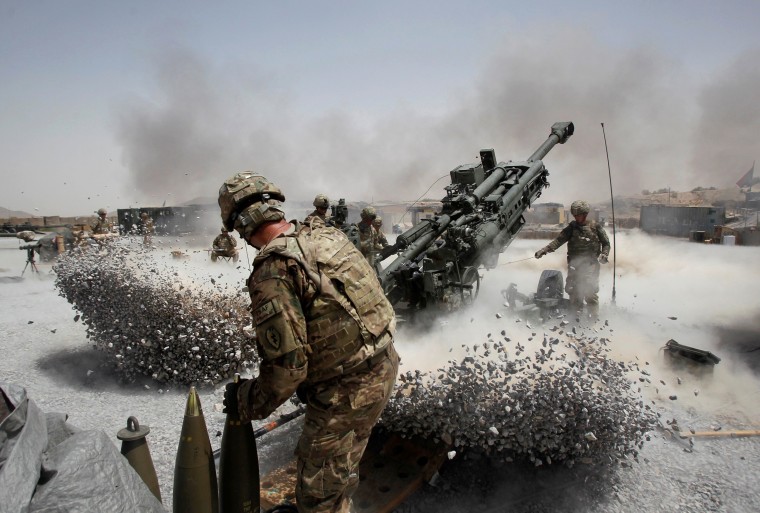WASHINGTON — President Donald Trump will use his first prime-time White House address to brief the nation about the "path forward" in the 16-year war in Afghanistan on Monday night. The conflict has cost thousands of lives and billions of dollars and has now spread across three administrations.
Here's a look at some of the numbers associated with America's longest war:
Mission Length — 16 Years: That’s how long the war will have lasted come October, making it by far the longest war the nation has fought. Less than one month after the Sept. 11, 2001 attacks, President George W. Bush announced the first strikes in Afghanistan and in June 2010, the war surpassed Vietnam as the longest conflict in U.S. history.
President Barack Obama ended the combat mission in Afghanistan, known as “Operation Enduring Freedom,” in 2014. But the U.S. and Afghanistan governments reached an agreement to keep some American troops in the country even after the combat mission ended. Coalition troops remain in the country as well.
Three Administrations: There have now been three presidents who have served as commander-in-chief during the conflict. President George W. Bush addressed the nation from the White House to announce the first airstrikes in Afghanistan on Oct. 7, 2001. Obama made major prime-time addresses to announce both troop build-ups and withdrawals, and President Donald Trump will use his first prime-time address from the White House to speak about the war he once criticized Obama for escalating.
Number of U.S. troops serving: Roughly 8,400 are currently serving in Afghanistan. They serve dual roles, conducting counter-terrorism operations against al Qaeda and ISIS, as well as training Afghan forces. The number is down from 9,800 in 2016 and reports suggest the president is likely to announce a modest increase Monday night.
Troop levels swelled to nearly 100,000 in 2010 and 2011 amid a resurgence in violence. Obama began a draw-down in 2012 and the number of troops in the country has steadily decreased since then.
U.S. Casualties: 2,403. 2010 marked the deadliest year in Afghanistan, with 499 U.S. soldiers and 711 total coalition forces killed, according to the Iraq Coalition Casuality Count. Violence escalated in the country following Obama's announcement in December of 2009 that an additional 33,000 troops would be sent to battle al Qaeda and the Taliban.
By comparison 4,523 U.S. troops have been killed since the Iraq war began in 2003, according to the group.
The war has also taken a tremendous toll on citizens of the war-torn nation. Tens of thousands of Afghans are thought to have died since the U.S. helped topple the Taliban in 2001. Earlier this year, the United Nations reported that 3,498 Afghan civilians were killed in 2016 alone and 7,920 were injured, making it the deadliest year for civilian casualties since the U.N. began counting in 2009. The report also stated that the number of children killed in 2016 was 24 percent greater than the previous highest recorded figure.
Half year figures U.N. for 2017 released in July detail 1,662 civilian deaths and 3,581 injured.
Cost to the U.S.: That could creep as high as nearly $2 trillion, according to Brown University’s Cost of War Project. The group estimates the total cost of the war to be $783 billion through fiscal year 2016. That number climbs to $1.8 trillionwhen factoring in long-term spending like veterans’ care and interest on debt, researchers found. A Congressional Research Service Report estimated the operational cost of the war in Afghanistan was $686 billion through 2014.
Coalition of the Willing: 136 countries have supported the global war on terror with military assistance. Next to the U.S., the United Kingdom ranks second in the number of troops lost in Afghanistan with 455, according to iCasualties.

